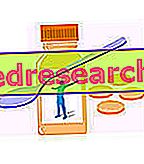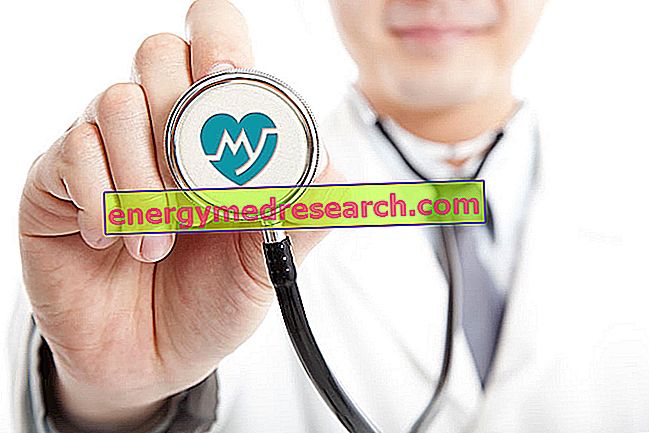EPHELIA ® is a drug based on Estradiol
THERAPEUTIC GROUP: Natural estrogens
IndicationsAction mechanismStudies and clinical effectiveness Usage and dosage instructionsWarnings Pregnancy and lactationInteractionsContraindicationsUndesirable effects
Indications EPHELIA ® - Estradiol
EPHELIA ® is indicated as a hormone replacement therapy in post-menopausal women to control the typical post-clinical symptoms.
Mechanism of action EPHELIA ® - Estradiol
The hormone contained in EPHELIA ® is 17 Beta Estradiol, a natural estrogen produced physiologically by the granulosa cells of the ovarian follicle thanks to the aromatase enzyme, able to convert the androgens produced by theca cells into estrogens.
Normal production, which is carried out cyclically in women at the follicular and ovulatory phase of the ovarian cycle, guarantees, in addition to the development of secondary sexual characteristics during developmental age, normal endometrial turnover.
However, the action of estradiol is not limited exclusively to the level of the genital apparatus, but it also affects the bone tissue, being able to balance bone remodeling, the mammary gland, modulating its development and functionality, and metabolism, increasing the hepatic secretion of TBG and hence the proportion of circulating thyroid hormones linked to the protein.
The absence of this hormone, which is realized physiologically during menopause, significantly affects the overall health of the woman, contributing to the establishment of a complex symptom picture that associates nerve and neurological manifestations, others of high severity such as osteoporosis .
And it is therefore precisely from these conditions that the need arises for a replacement therapy capable of reducing the symptoms and the risk of developing related diseases.
The formulation in plasters also guarantees an excellent bioavailability of the active ingredient, reducing the potential side effects of oral therapy, and making it particularly easy to take.
Studies carried out and clinical efficacy
1. EXTROGENIC THERAPY AND CARDIOVASCULAR RISK
One of the major risks described for years following hormonal therapy with conjugated equine estrogens was that related to cardiovascular diseases. Studies have shown that oral administration could increase levels of C-reactive protein by 64% in just 12 months of treatment. The transition to estradiol transdermal patches has significantly reduced this risk, resulting in a rise in PCR of only 3% in 12 months of treatment.
2. DOSE AND ROUTE OF SUMMARY
The marketing of new estrogen-based drugs offers the doctor important alternatives in choosing the correct therapeutic regimen. The choice of dosage and route of administration represents a particularly important parameter, able to significantly affect the symptomatology while controlling the numerous side effects described.
3. HORMONAL THERAPY AND RISKS
Although estrogen hormone therapy is particularly important for improving the quality of life of post-menopausal women, side effects significantly reduce clinical use. In this regard, the advent of new recruitment strategies such as the transcutaneous one seems able to guarantee a reduction in side effects.
Method of use and dosage
EPHELIA ® transdermal patch:
EPHELIA 25 mcg / 24 h - 5 mg of estradiolemhydrate;
EPHELIA 37.5 mcg / 24 h - 7.5 mg estradiolemidrato;
EPHELIA50 mcg / 24 h - 10 mg of estradiolemhydrate;
EPHELIA 75 mcg / 24 h - 15 mg estradiolemidrato;
EPHELIA 100 mcg / 24 h - 20 mg of estradiolemhydrate.
The therapy should be started with the lowest possible dosage, possibly correcting the dose following the evaluation of therapeutic efficacy and the possible presence of side effects.
The patches, which guarantee a controlled release of estradiol, should be replaced every 3 - 4 days by rotating the application points, with the exception of the breast, where it must not be applied at all.
The definition of the adequate therapeutic scheme, whether continuous or cyclical, must be defined by your doctor after having carefully evaluated the patient's state of health and his clinical picture.
Medical supervision is necessary throughout the therapeutic course.
Warnings EPHELIA ® - Estradiol
Estrogen hormone replacement therapy with estrogen must be preceded and accompanied by medical personnel, who must carefully monitor the patient's health and the possible occurrence of collateral symptoms.
The danger of the therapy could be further increased by the presence of conditions predisposing to the development of neoplastic and cardiovascular pathologies, such as endometriosis, history or familiarity for dependent thromboembolic or estrogen diseases, hypertension, liver disease, diabetes, migraine and autoimmune diseases.
It is also useful to remember that estrogen therapy increases the risk of developing breast cancer, endometrial cancer, breast cancer, coronary heart disease and stroke.
PREGNANCY AND BREASTFEEDING
Although epidemiological studies reveal no particular teratogenic and mutagenic effects on the fetus, when accidentally exposed to estrogen, the intake of EPHELIA ® is contraindicated both during pregnancy and in the subsequent period of breastfeeding.
Interactions
The absence of first-pass metabolism, which characterizes the administration of estradiol via trans dermal patches, significantly reduces the risk of clinically relevant drug interactions.
Despite this it should be remembered that the therapeutic efficacy of estradiol can be altered by the concomitant administration of inducers or inhibitors of liver enzymes responsible for the metabolism of these hormones, such as anticonvulsants and anti-infectives.
Contraindications EPHELIA ® - Estradiol
EPHELIA ® is contraindicated during pregnancy and lactation, in patients with estorgeno-dependent carcinomas, breast carcinoma, acute thrombophlebitis, recent embolic thrombus disease,
history of thrombus embolism, liver disease, porphyria, untreated endometrial hyperplasia, non-agnostic vaginal discharge and of course in case of hypersensitivity to the active substance or to one of its excipients.
Undesirable effects - Side effects
Despite the transdermal administration of estradiol reduces some side effects observed instead following oral administration, it is necessary to remember in general that estrogen replacement therapy exposes the patient to numerous side effects both acute and immediate and chronic and progressive.
Among the acute symptoms that tend to occur in the initial treatment period, and generally to disappear in the subsequent phases, it is possible to remember weight variations, increase in size and breast tension, changes in liver function, alterations in glucose tolerance, migraine, palpitations, general malaise, dizziness, depression, libido changes, endometrial hyperplasia, urinary incontinence, cystitis, hypercholesterolemia, dyspnea and rhinitis.
Important epidemiological studies instead have tried to characterize some of the pathological manifestations observed following the intake of estrogens for prolonged periods.
More precisely, the intake of estrogen for 5 years seems to increase the risk of developing breast and endometrial carcinomas, which grows with the increase in the duration of therapy.
Coronary and vascular disorders have developed more frequently in women undergoing replacement therapy with estradiol or other estrogens.
Note
EPHELIA ® can be sold only under medical prescription.



